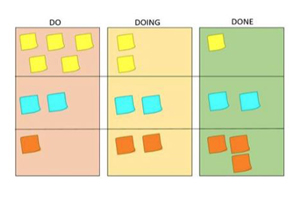
"Field Notes" is a regular AACRAO Connect column covering practical and philosophical issues facing admissions and registrar professionals. The columns are authored by various AACRAO members. If you have an idea for a column and would like to contribute, please send an email to the editor at connect@aacrao.org.
by Cié Gee, Ed.D.,
Associate Vice Provost Career-Engaged Learning, University of Texas at San Antonio
Imagine all the members of your enrollment leadership team were playing a game of soccer. The team scores when they work the ball down the field, avoiding obstacles, and makes a goal. They do this by having a clear understanding of where
the goal is, communicating, working together and applying applicable skills/resources when appropriate.
Now imagine that same team with five different balls. It’s difficult to work all the balls down the field together. Some balls go out of bounds, some get ignored, and some even get kicked backwards. The team is working very hard,
but is not getting closer to the goal.
For enrollment management professionals, the amount of responsibility for the success of the next class can be overwhelming. Implementing a project management system for SEM can alleviate some of the chaos of multiple projects that overlap
or are co-dependent. A living project outline makes it easier to identify ownership, accountability, and implement clear acceptance criteria (definitions of ‘done’).
SEM Project Management
The proposed SEM tailored project management tool uses the Scrum methodology. The term Scrum is a management framework that originated in the disciplines of engineering, math, and computer science. Scrum does not stand for anything,
in fact, the term originated from the game of rugby referring to the team coming together to get the ball from one end of the field to the other.
In short, Scrum methodology allows teams to:
- Manage projects more effectively
- Have real time process review
- Be adaptive in decision making
- Have flexibility in changing environments
- Identify obstacles and work to clear them so the work can get done
- Be interactive and cross-functional
The commotion that can result from too many projects at once has to be controlled to move forward. Risk is minimized by focusing on short iterations of clearly defined deliverables. Simply put, projects are mapped out with timeframes,
product owners, and specific goals on a Scrum board with columns of Do, Doing, Done.
5 ways Scrum fits as a project management tool for SEM
- SEM is a long range project.
Since SEM is not a short race, focus and direction can be lost, therefore a tool to keep everyone on course would be helpful.
- SEM is a continuous process.
Most institutions have five or ten year plans, but those plans should be dynamic. By being interactive and reflective with the SEM plan there are allowances for changes in course when needed.
- Key Performance Indicators (KPI) drive SEM. Without constant attention and evaluation, initiatives can morph into something that may no longer be relevant. KPI’s should be central to the conversations and a tool that
allows these to be routinely reviewed will accomplish this task.
- SEM must be flexible. SEM should be malleable enough to adjust to re-alignment if needed to stay in line with the institution’s mission, vision, and values. It is not a report on a shelf.
- SEM is a campus wide effort
. A project management tool allows for management of large projects by breaking them down into identifiable deliverables. Identification of achievement and moving the process along is critical for campus wide buy in and participation.
This can also assist in addressing the chaos of change.
3 ways SEM project management will benefit
- Institutions do not have one enrollment manager responsible for the success of the new class, but a team of highly skilled, multifaceted people. The team passes the ball to each other as it moves down the field, there is never a lone
ranger or superstar working alone.
- Enrollment teams are not made up of people with the same skills. Everyone brings a certain skill element to the game. The team sprints together. If enrollment teams are not focused on the same ball, pandemonium ensues.
Each member has their own ball trying feverishly to get it down the field. Everyone is working very hard to reach the goal, but actual productivity is minimal.
- The strategy of the game can be adapted if needed as the team uses their judgement given the current situation. The ability to be agile in a fast paced environment can mean the difference between failure and success. The value
of the SEM project management is the ability of the cross functional team to identify changes that need to be made early on, and not just staying the course because it’s written in a document.
For more on this topic, look for the upcoming article in the January 2020 issue of SEM Quarterly.